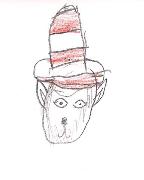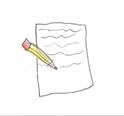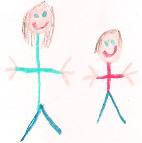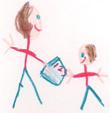Topic outline
General
What makes a good children's story? Think of some books that you read as a child.
What made them memorable for you?
In this online unit, we'll explore techniques and tools for writing children's literature.
You'll also have the opportunity to work online with an elementary student to write a personalized story.
Topic 1
 1. Getting Started: Remember your favorite childhood books.
1. Getting Started: Remember your favorite childhood books.- Before we begin the writing project, take a moment to think back to the books that you enjoyed when you were little!
Get started by watching the "Favorite Children's Books" video and think about the books you enjoyed most when you were little. Enjoy!
After viewing the video, think about titles of books that you enjoyed as a child. Then share your memories and ideas in the Edmodo discussion group. See the assignment below for details.
Topic 2
2. The Writer's Toolbox

- Writers need to consider several things when creating stories for children. Complete these activities to learn a bit more about special techniques in writing for children.
Children enjoy stories that are descriptive and lively. View this video for a "toolbox" of techniques to use when writing stories.
Good children's books appeal to basic needs that children have. Read through this brief summary of themes.
Listen to an excerpt of Book! Book! Book! by Deborah Bruss to hear how these writing techniques can be used.
Practice working with these techniques!
Topic 3
 3. Evaluating Children's Books
3. Evaluating Children's Books- Now that you've learned about some of the writing techniques, do some investigating. Read and evaluate some children's books.
Browse a digital library database to find 3 children's books to read and evaluate. Open the document below for details about how to access this database.
Once you've chosen and read three stories from the database, open and complete the assignment below.
Topic 4
4. Meet your audience!

- Now it's your turn to write! Begin by meeting and getting to know an elementary student. Follow the steps below to set up an online interview!
We'll be using VoiceThread to create interviews for elementary students. Open the assignment below to learn about this online tool.
Here's a sample interview VoiceThread to watch. (You'll begin work on your own soon!)
The next step is to develop interview questions for your elementary student. Open the assignment below for details.
Once your interview VoiceThread is complete, I will forward it to an elementary classroom, and a student will respond to it. Once you receive the response, you may continue on to the next section.
Topic 5
 5. Create a story!
5. Create a story!- Begin writing your own children's story! We'll take the process step-by-step.
Once you receive comments on your interview VoiceThread, it's time to begin your children's story. Your final product will be presented on VT too. To see an example, click on the video below.
The first step in creating your own children's story is to write a rough draft. See below for details.
Once you've received feedback on your first draft, the next step is to add illustrations.
Topic 6
6. Share your story!

- This last step is the most important--and the most fun! Present your story to your elementary student! (They've all been eagerly waiting for their stories, so be sure to follow through.)

Once you've completed your final revisions to your story, upload the entire PowerPoint to VoiceThread. See the assignment below for details.
Once you've submitted the final version of your story, it will be presented to your elementary student. Watch for their comments! Then, celebrate your success! You are a published author!
Topic 7
- Teacher notes: preparing for this unit
